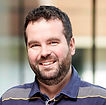7450 Slice Chambers
-
Designed to be operated as either an interface (Haas type) chamber or as a submerged (Oslo type) chamber.
-
Chambers suitable for research into either cell electrophysiology or biochemistry.
-
Available in two or four chamber configurations.
-
Six-chamber version is available for biochemistry.
-
Each chamber is removable from the unit and can be replaced if required.
-
Chambers are available manufactured in clear acrylic (Perspex®/Plexiglas®) or PTFE (Teflon®) materials.
Details
This multi-cell slice chamber is designed to work in either Submerged or Interface modes. They features acrylic tissue cell bodies, each with an Ag/AgCl reference electrode for tissue electrophysiology and holding cells designed to keep additional slices viable until used. The unit could of course be used for biochemistry as well. Cell bodies are also available made of Teflon®. This is recommended in settings where pharmacological agents could be absorbed and later released by the acrylic cell body.
Stable, linear flow and temperature are assured in either Submerged or Interface mode. Replacement cell chambers are available in both Acrylic and P.T.F.E. (Teflon®) materials.
A digital display heater / controller unit is included with predictive algorithms (Proportional, Integral and Derivative) and dual feedback from a thermistor for fast feedback, plus another for spot temperature offset. The water bath temperature is controlled to within +/- 0.1 Celsius in a stable environment.
The ergonomics of being able to easily work with multiple slices has been carefully considered in the design of this unit and all multi-chamber systems. Tissue cells are spaced for micromanipulators to hold stimulator and recording electrodes on either side. The 4 channel chambers are the most cost and time efficient. They may be used alone or they can be built up into our semi-automated Workstation or fully automated Synchroslice integrated lab used for hippocampal and heart slice electrophysiology. With optional micromanipulators and overhead cameras, placement of 8 electrodes can be done within 20-30 minutes, with all slices viewed though a quad processor and video monitor.
Chambers for Electrophysiology
-
7450-2A(E) Dual Channel Acrylic
-
7450-4A(E) Quad Channel Acrylic
-
7450-2P(E) Dual Channel PTFE
-
7450-4P(E) Quad Channel PTFE
Chambers for Biochemistry
-
7450-2A(B) Dual Channel Acrylic
-
7450-4A(B) Quad Channel acrylic
-
7450-6A(B) Hex Channel Acrylic
-
7450-2P(B) Dual Channel PTFE
-
7450-4P(B) Quad Channel PTFE
-
7450-6P(B) Hex Channel PTFE
Further Information
Our Vibrotomes

Stuart Greenhill, PhD,
Aston University
Our laboratory uses both animal and human tissue in acute and organotypic culture brain slice experiments. We have two 7000smz-2 vibrotomes in daily use which form the backbone of our slice preparations – the reliability and repeatability provided by the slicer’s Z-axis stability and calibration mechanism means that our preparations get off to the best possible start. The 7000smz-2 produces the highest quality brain slices of any vibrotome I have used, allowing us to generate in vivo-like oscillations in slice preparations. On top of this the service and support from Campden has been second to none.










